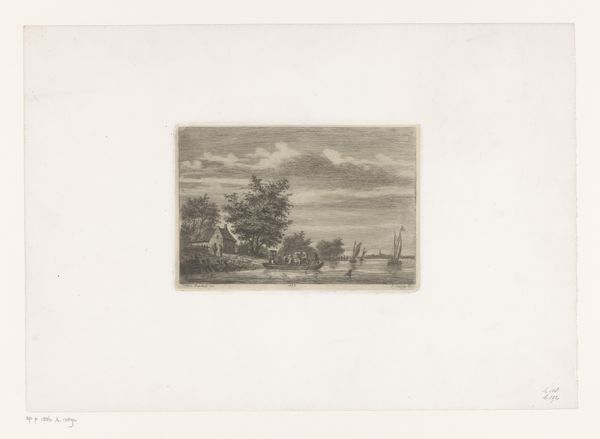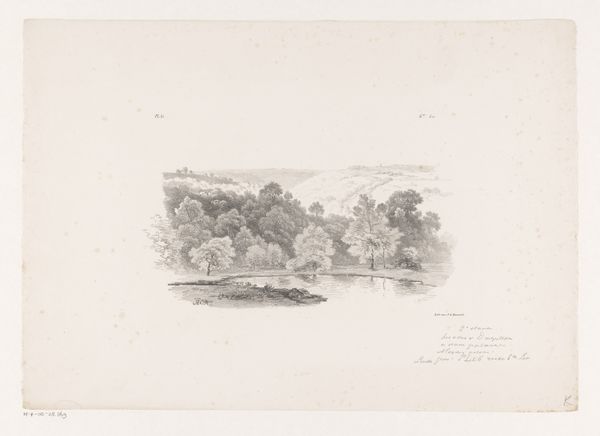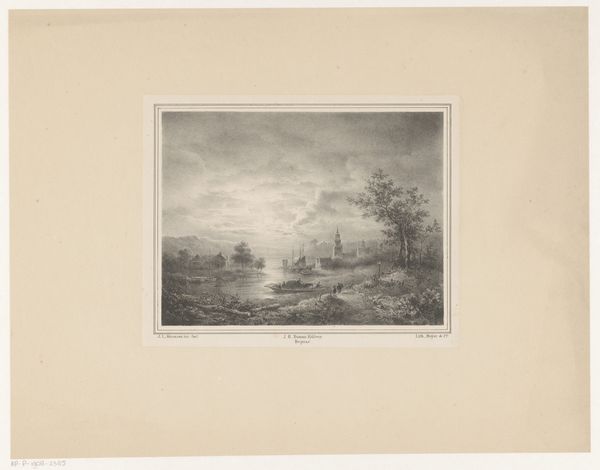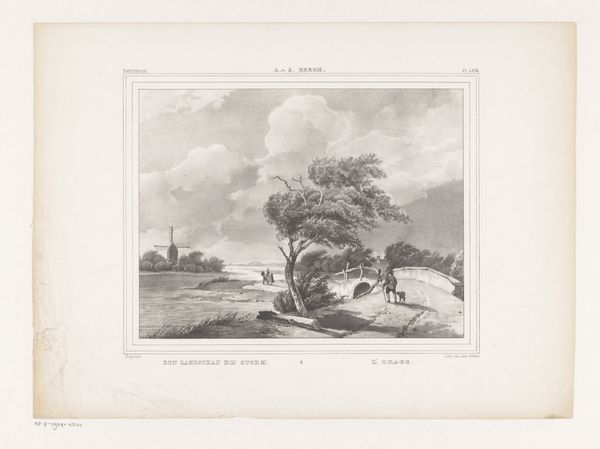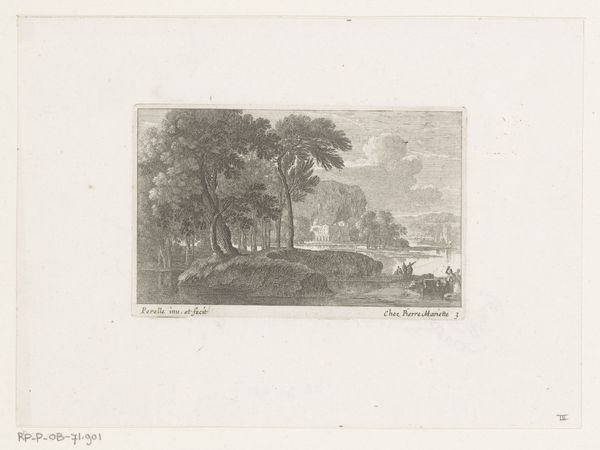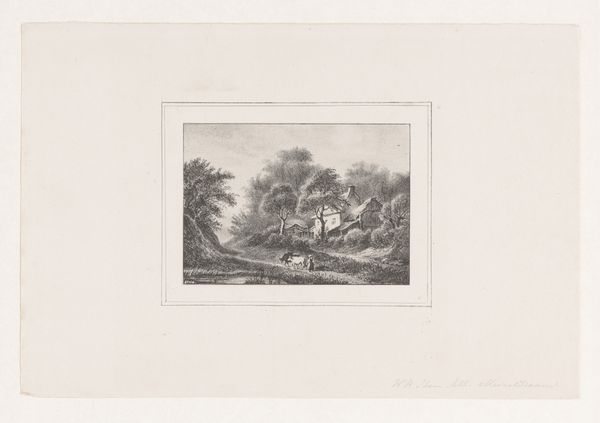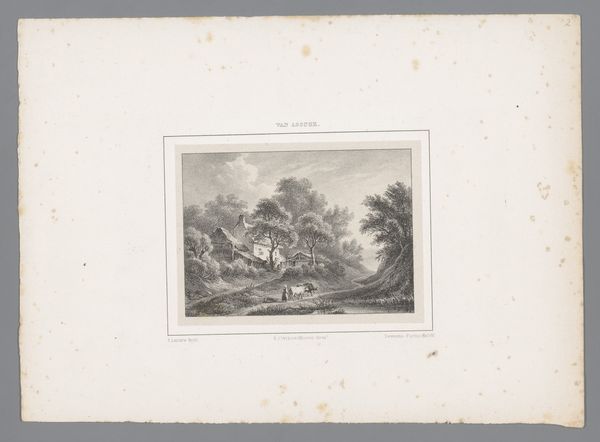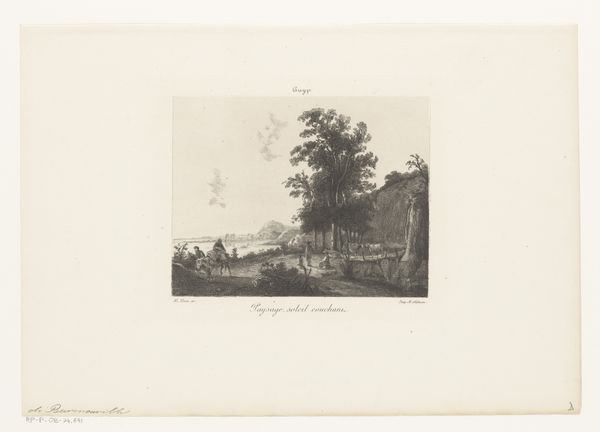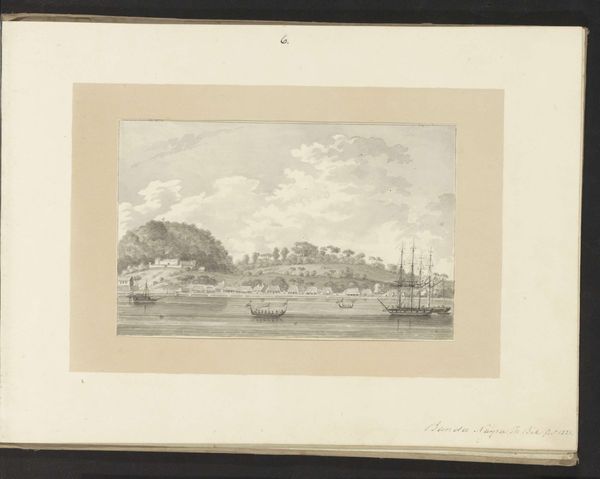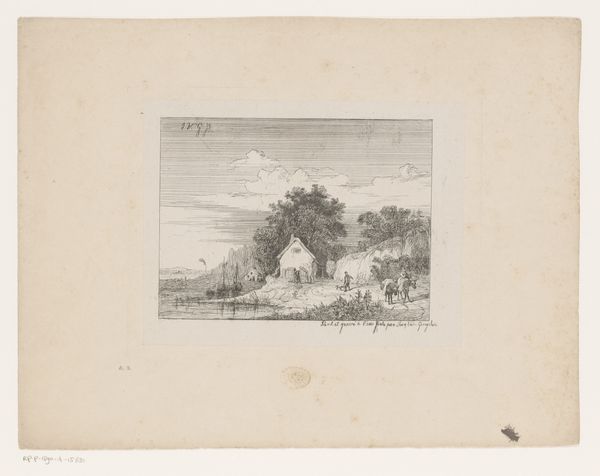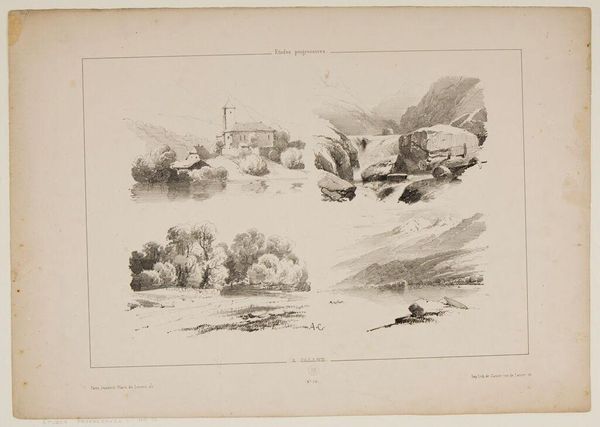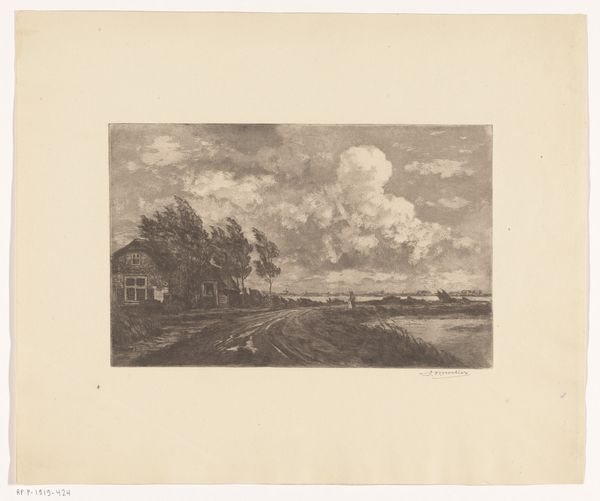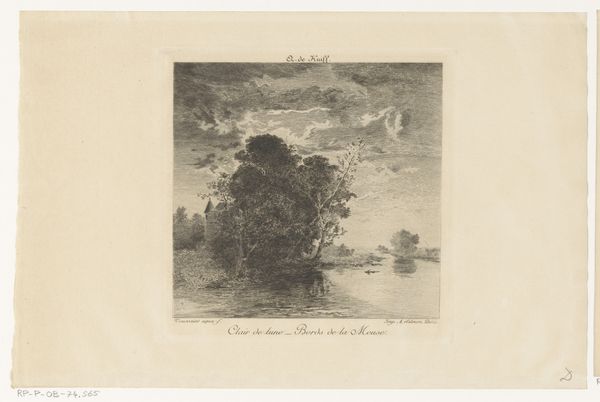
drawing, paper, pencil, graphite
#
drawing
#
landscape
#
paper
#
romanticism
#
pencil
#
graphite
#
realism
Dimensions: height 275 mm, width 365 mm
Copyright: Rijks Museum: Open Domain
Joseph Hartogensis's landscape, with its large tree and shepherd, evokes a serene, pastoral scene. The dominant symbol here is the tree, which has been a recurring motif throughout art history, representing life, growth, and connection to the earth. Consider how the tree, in ancient cultures, was often seen as a bridge between the earthly and the divine. In this artwork, the tree stands prominently, its branches reaching towards the heavens, symbolizing a link between the physical and spiritual realms. The shepherd, a classical figure symbolizing care and guidance, further enriches the scene. This figure connects to biblical and mythological narratives. In earlier depictions, the shepherd may have carried overt religious connotations, while here, it takes on a more secular, nostalgic tone. This shift reflects the evolving cultural values and a longing for a simpler, more harmonious existence. Note how the composition invites viewers into a dreamlike state, engaging our subconscious desire for peace and tranquility. The symbols of nature become powerful, and stir deep emotional resonance. The cyclical recurrence of such symbols in art reminds us of our shared human experience, transcending time and culture. These motifs reappear and adapt, reflecting our ever-evolving understanding of the world.
Comments
No comments
Be the first to comment and join the conversation on the ultimate creative platform.
